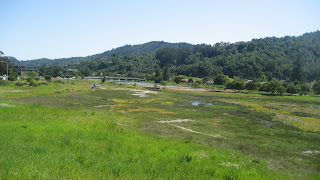About the Author
I have lived in Marin County my entire life. For the first few years I lived in an apartment in Mill Valley, and since the age of three I have lived on the same exact street all my life. The furthest I’ve ever moved in the last 15 years was across the street to a different house. I live in Kentfield, right next to Bacich Elementary School. I am sorry to admit that I don’t add much to the ecology in my town. All I do is detract from it. Aside from the small compost and garden that I help my family maintain, all I do is harm the environment I live in. I drive a car instead of biking, and I produce quite a bit of trash. Putting that aside, I love my community. Kentfield is a beautiful place that has amazing views. Until I came to Marin Academy, every single thing I did was in Kentfield. My middle school, elementary school, preschool, sports teams and friends were all located in Kentfield. My favorite thing about Kentfield is its great views and its abundance of nature. There are so many trees and plants in Kentfield that I feel like I’m living as a part of the environment, not just on top of it. I love going on hikes and looking out over my entire life all at once. From one hill, I can see where I spend 99.9 percent of my time, which is pretty amazing for me. I can map out most experiences I’ve ever had, from the age of five to eighteen. I also like how small Kentfield is. Since I hate insects altogether, I don’t have a favorite one. My favorite animal in Marin is the deer. I enjoy driving by them at the side of the road, and always feel awful when one is lying in the middle of the road. My favorite plant is the Oak tree. If you’re coming to visit Kentfield and Marin, make sure to go on a hike. The mountains in Marin are unbelievable, and the views they give are also beautiful.
This is a picture of me and my twin brother, Sommer, in Evolution Valley, CA. It's up near Yosemite. My dad and us went backpacking there last summer, and it was one of the most beautiful places I've ever been. It was also THE most untouched ecosystem I've ever been in.





















